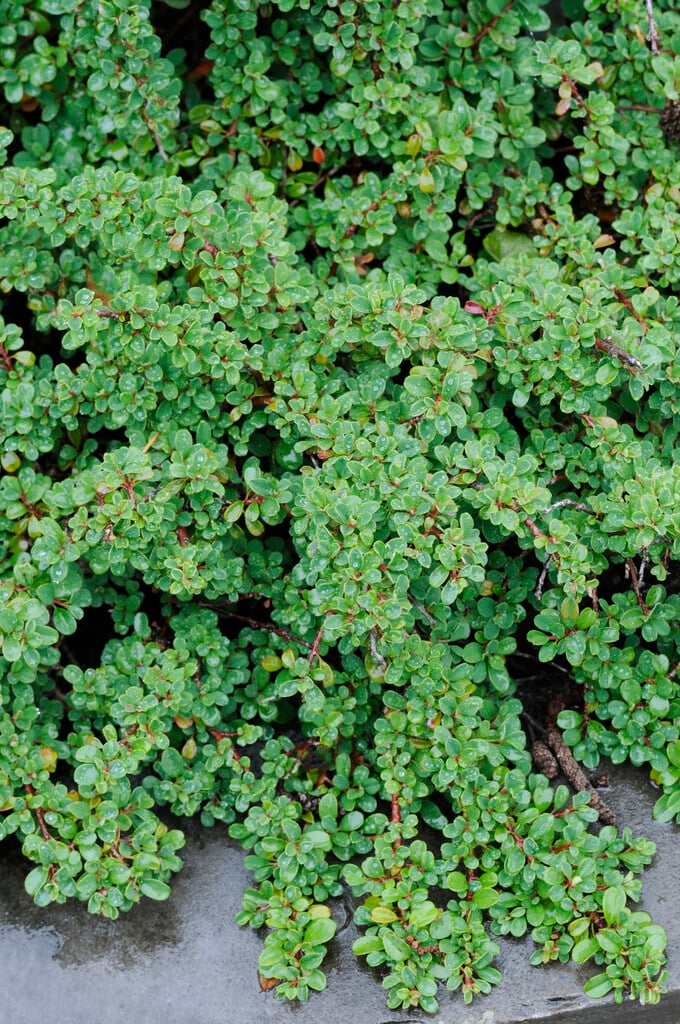Cotoneaster congestus
crowded-leaf cotoneaster
A low-growing, evergreen shrub with short, arching branches creating a dense, mounded mat clothed in tiny, dull green, oval leaves. Stemless, white flowers are scattered singly along the branches in early summer, followed by bright red berries in autumn

Buy this plant
Size
Ultimate height
0.5–1 metresTime to ultimate height
5–10 yearsUltimate spread
0.5–1 metresGrowing conditions
Moisture
Well–drainedpH
Acid, Alkaline, NeutralColour & scent
| Stem | Flower | Foliage | Fruit | |
| Spring | Green | |||
|---|---|---|---|---|
| Summer | White | Green | ||
| Autumn | Green | Red | ||
| Winter | Green |
Position
- Full sun
- Partial shade
Aspect
East–facing or South–facing or West–facing
Exposure
Exposed or ShelteredDrought resistance
Yes Hardiness
H6Botanical details
- Family
- Rosaceae
- Native to GB / Ireland
- No
- Foliage
- Evergreen
- Habit
- Matforming, Bushy
- Potentially harmful
- Fruit are ornamental - not to be eaten. Wear gloves and other protective equipment when handling. Pets: Fruit are ornamental - not to be eaten - see the HTA guide to potentially harmful plants for further information and useful contact numbers
- Genus
Cotoneaster can be deciduous or evergreen shrubs or small trees, with simple, entire leaves and clusters of small white or pink flowers in spring and summer, followed by showy red, purple or black berries
- Name status
Correct
- Plant range
- Himalaya
How to grow
Cultivation
Grow in moderately fertile, well-drained soil in full sun or partial shade; tolerant of dry conditions once established
Propagation
Propagate by seed sown in containers in a cold frame as soon as ripe in autumn, or by semi-ripe cuttings in late summer
Suggested planting locations and garden types
- Coastal
- Cottage and informal garden
- Rock garden
- Low Maintenance
- Banks and slopes
- Ground cover
Pruning
Pests
May be susceptible to brown scale, cotoneaster webber caterpillar and aphids including woolly aphid
Diseases
May be susceptible to fireblight, honey fungus, leaf spot, silver leaf and virus diseases
Get involved
The Royal Horticultural Society is the UK’s leading gardening charity. We aim to enrich everyone’s life through plants, and make the UK a greener and more beautiful place.